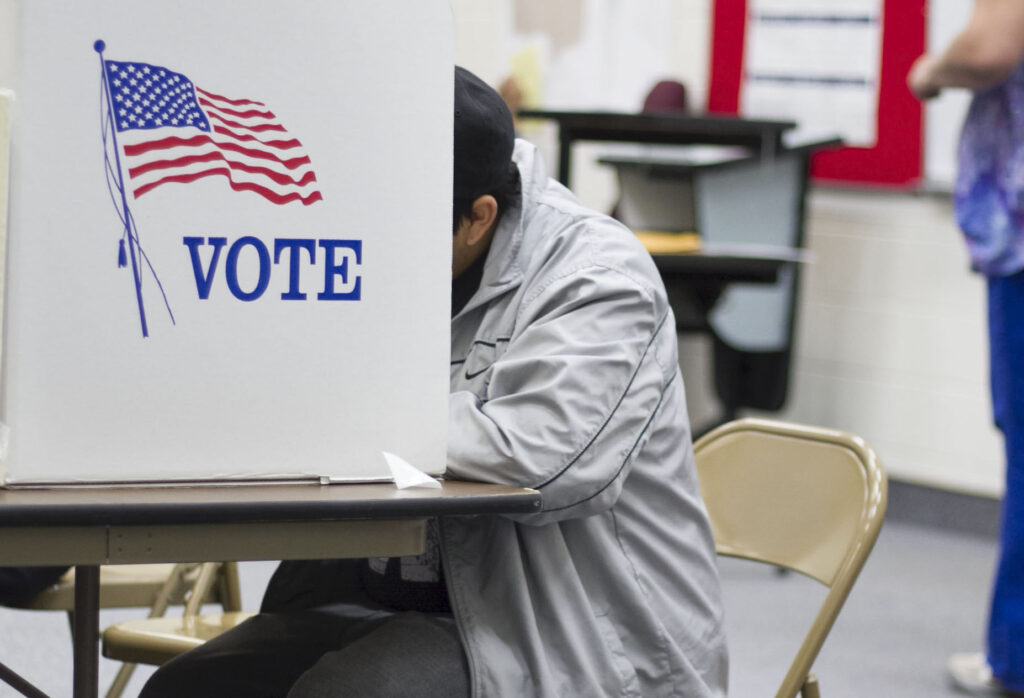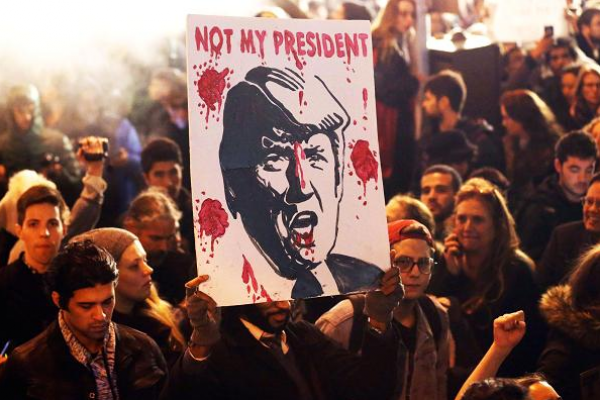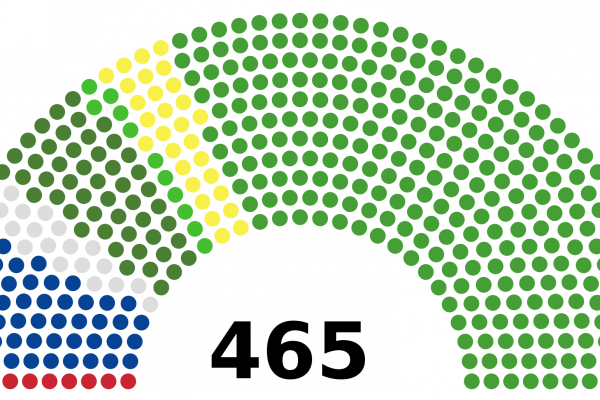In 2016 Colorado elector Micheal Baca and Washington elector Bret Chiafalo reacted to the prospect of Donald Trump’s victory by launching what they called the Hamilton electors movement. Their goal was to persuade electors to vote their conscience—which meant, in that context, for someone other than Trump—instead of adhering to the preference of the plurality of voters in their states.
Thirty-two states, along with the District of Columbia, had passed laws to prevent these so-called “faithless” electors. Still, as many as ten electors indicated a willingness to vote for someone other than the nominee of the party that nominated them as electors. Some, like Baca, were replaced; in the end seven voted against the grain. As it turns out, only two of the seven voted against Trump; the other five voted against Clinton.
This fall we may experience the least democratic, most demographically divisive presidential election since the Civil War. States should act now to develop solutions.
Those two fell far short of the number required to deny Trump electoral victory, but to press their point, Baca and Chiafalo went to court. Last year the Court of Appeals for the Tenth Circuit held that Baca had a right to hold his seat as an elector and vote for whomever he wanted. Meanwhile, the Washington State Supreme Court ruled to the contrary, holding that the state could fine Chiafalo $1000 pursuant to state law for departing from the plurality. The Supreme Court has agreed to review both cases; a decision is likely to be made between April and July.
While an important issue in its own right, the Baca-Chiafalo controversy is a symptom of a much deeper problem. It is one more reminder of the abiding dysfunction within the structure of our broken electoral process—from voting technologies susceptible to hacking, varying rules from state to state regarding recounts, and, of course, clashes between the results of the popular vote and the Electoral College. That dysfunction is likely to be on wide display once again this November: it is not beyond the realm of possibility that we may experience this fall the least democratic, most demographically divisive presidential election since the Civil War. States should act now to develop solutions.
• • •
Note, first, that however the Court rules on the narrow issue of faithless electors, it may not necessarily produce a decision that guarantees a less dysfunctional process. If it decides that electors possess a constitutional right to vote as they please, states would have only a few short months to create a legal structure that governs the appointment of conscience-voting electors, not to mention one that regulates advertising or other techniques for persuading these independent electors who to pick for president.
Alternatively, the Court may follow popular opinion and overturn the Baca ruling. (According to a February 2020 poll by Claster Consulting, 49 percent of Americans want the Court to rule that states can require that electors vote for the presidential candidate who wins the state; only 31 percent thought the Court should rule that electors can vote for whomever they want.) In this case, presumably all states would need to pass laws against a conscience vote. But what law would do that? Certainly a modest fine imposed by Washington is no deterrent. Moreover, many states have no law on this issue at all. At the very least, concern about a repetition of the Baca-Chiafalo initiative should cause all fifty states and the District of Columbia to pass laws that constrain elector freedom. But can such a law be truly effective? As long as there is an intermediary between the voters and the voted for, the danger always exists that the go-between will become kingmaker.
More generally, to see just how deep the dysfunction could run, consider what might happen if no candidate this fall receives 270 electoral votes—whether because of conscience-driven defection, third-party success, or because a state never finishes a recount and does not appoint any electors at all.
In this case, the election moves to the House of Representatives, where each state’s delegation gets one vote. (The District of Columbia is disenfranchised at this stage, not being a state.) If no candidate gets at least twenty-six state votes in the House, the process moves to the Senate, which picks a vice president. If re-elected as majority leader, Mitch McConnell would presumably easily assemble the votes to choose Mike Pence as vice president. If the House remains deadlocked until Inauguration Day, Pence would serve as acting president until the deadlock is resolved.
• • •
Fortunately, there are ways out of this mess. One is to launch a public debate on a national constitutional amendment that would resolve, once and for all, our electoral ills. Even if Congress could not muster a two-thirds vote to adopt an amendment, the debate is important and should be conducted now.
On the narrow issue of an amendment prohibiting faithless electors, public opinion seems solidly for it. In its poll, Claster asked respondents whether they thought an amendment should guarantee that a state’s electors always go to the candidate who gets the most votes in the state. 52 percent of Americans answered yes, while only 30 percent answered no. Among Republicans the split was 41 percent yes, 40 percent no. That suggests that nearly half of Republican voters would be willing to have their candidate prevail even if that outcome depended on a faithless elector. However, the poll clearly shows popular support for an amendment that would eliminate the ability of middlemen to depart from the results of statewide voting.
Hundreds of years after the Framers of the U.S. Constitution cut their deal between free and slave states, it is far past time to reform the electoral system.
On the other hand, there are historical precedents for more radical amendments. In 1969–71 Congress came close to voting for an amendment that would abolish the Electoral College and replace it with a two-round system based on the national popular vote. Richard Nixon joined with Northern Democrats to support it; it passed the House with the requisite two-thirds majority, but Southern senators led a filibuster to block a vote. For that faction, the winner-take-all electoral system helped ensure that white majorities would deny significance to African American votes in the general presidential election. That motive may still exist. In addition, the regionalization of voting—with the Democrats heavily favored on the coasts, and the Republicans in power in the most of the middle and Southern states—indicates that it would be very unlikely that Congress would adopt an amendment supporting direct election on a national basis.
Indeed, the most difficult problem facing our electoral system may well be the conflict between those in favor of eliminating the Electoral College for the results of the national popular vote and those who prefer the current state-by-state system. A strong majority of Americans prefer the former, but Republican Party professionals believe the current system benefits their candidate; they tend to oppose a direct national election.
Another option is ranked-choice voting. Under that system, which will be used in Maine this November for presidential voting, ballots ask voters to rank their preferences rather than pick a single candidate. Candidates are eliminated from the bottom up, and their votes are reassigned to their second choice on such ballots. This process continues until someone has a majority. This technique generally benefits the major parties and reduces the risk that a third party can alter the outcome in a particular state, as the Ralph Nader candidacy probably did for Al Gore in Florida in 2000. It is conceivable, if not terribly likely, that both major parties would support a constitutional amendment requiring all states to adopt ranked-choice voting for president on a state-by-state basis, with electoral votes automatically counted for the majority winner in each state.
Arguably more feasible politically is an alternative that makes the national vote relevant, yet preserves a form of the state-by-state process: the use of a national choice ballot. Under this system, voters in at least some states would see a ballot that looks like this:

In this scheme, a state would still send electors to the Electoral College, and the electors would still vote for the state winner (perhaps with the possibility of some faithless elector defection, depending on how the Court rules on Baca and Chiafalo). Moreover, the national popular vote winner would still be determined in the usual way, on the basis of the voter’s preference for president indicated in the left column of the ballot. But in order to determine the state winner, the state would consider how the voter responded to the question in the right column. If the voter answers “no,” the state would count the ballot as a vote for the voter’s preference indicated in the left column. But if the voter answers “yes,” the state would count the ballot as a vote for the national winner, overriding the preference indicated in the left column.
This mechanism would allow voters in favor of a national popular vote to throw their support behind the national vote winner, without eradicating the Electoral College. The Claster poll revealed that 64 percent of Americans are in favor of having this option on their presidential ballot.
• • •
No matter how the Supreme Court rules on Baca and Chiafalo, states may adopt laws intended to bind electors to the wishes of voters. As each state debates those laws, they could also debate the adoption of the national choice ballot. Even if only some were to adopt such a ballot, the major party candidates would still have an incentive to campaign everywhere in order to achieve a national majority. That, in turn, would require them to appeal to a coalition of voters broad enough to compose a majority. Regional, divisive, factional candidates probably would not win a national vote. Participation and the prospects for national unity would rise.
These seem not just worthy goals, but imperatives for our fractured polity. Hundreds of years after the Framers of the U.S. Constitution cut their deal between free and slave states, it is far past time to reform the electoral system and give the country a workable method of electing a president that is sensitive to the votes of Americans everywhere.








